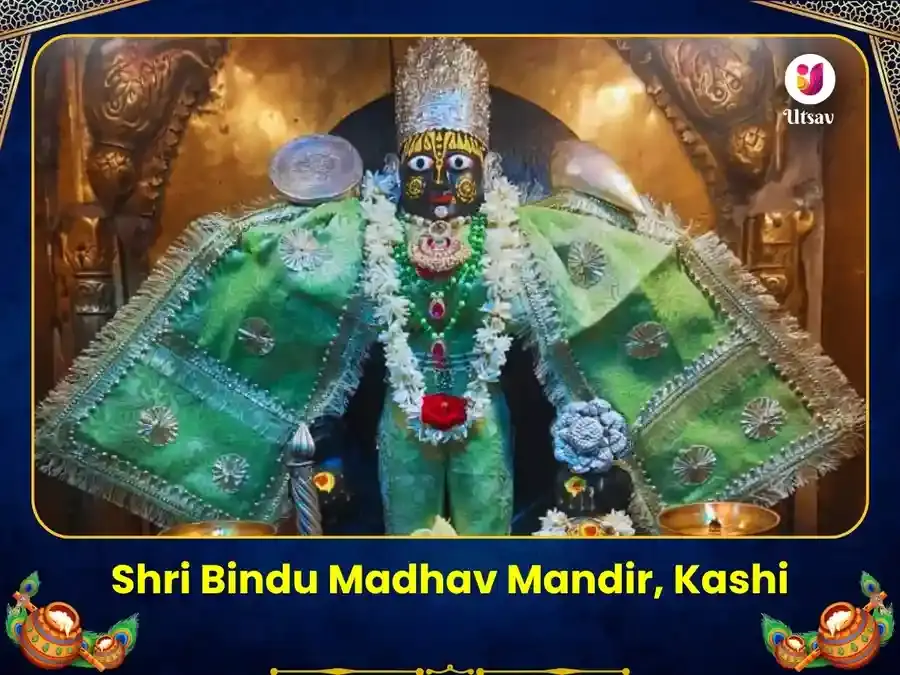Lord Hayagriva, the lesser-known incarnation of Lord Vishnu
Tue - Aug 27, 2024
4 min read
Share
Hayagriva, also known as Hayagreeva, is regarded as a Lord Vishnu Avatar. He is revered as the God of knowledge and wisdom, with a human body and a horse's head, beautiful white skin, white clothing, and reclining on a white lotus. The story symbolises the triumph of pure wisdom, guided by God's hand, against the evil forces of passion and darkness.
Table of Contents
1. Significance of Lord Hayagriva
2. Different stories behind the Hayagriva Avatar
3. Hayagriva Stotram and its meaning

Significance of Lord Hayagriva
Hayagriva, the incarnation, on the other hand, came to be worshipped and revered as the personification of all knowledge (Jnananandmayam devam), speech, and vidya (education) of all types (adharma sarva vidyanam) - a victory of brightness of wisdom over darkness of ignorance and the supremacy of the divine over the demonic. Hayagrīva is a significant god in the Vaishnava religion. His blessings are sought while beginning to study both religious and secular things. Special devotion is held on August's full moon (Śravaṇa-Paurṇamī) (his avatāra-dina) and Mahanavami, the ninth day of the festival. He is also known as "Hayashirasa". Hayaśirṣa translates to "horse" and "head."
Different Stories behind the Hayagriva Avatar
There are many accounts concerning Lord Vishnu's distinct incarnation.
First story-
One story holds that Vishnu revealed the Vedas to Brahma at the moment of creation. Realising the potency of the Vedas, two demons, Madhu and Kaitabha, took them from Brahma and hid them at the bottom of the ocean. When Brahma asked Vishnu for aid retrieving the holy scriptures, Vishnu adopted the Hayariva form, slew the two demons, and returned the Vedas to Brahma.
Second story-
Devi Bhagavata Purana contains another really intriguing variation. A demon named Hayagriva (one with a horse face), son of Kashyapa Prajapati, undertook extreme penance and gained a blessing from Goddess Durga, stating that he could only be destroyed by another "Hayagriva" and no other.
After receiving this blessing, he became arrogant and began causing havoc throughout Devaloka. The unhappy Devas, as usual, resorted to Vishnu for help in overcoming the nasty and cruel monster. But the gift proved too great even for Vishnu, as it was bestowed by none other than the Supreme Goddess. Even after a lengthy and violent struggle, the demon Hayagriva remained unbeatable. But the conflict took a toll on Vishnu. He went to Vaikuntha to rest and restore his might and strength. He is reported to have sat in Padmasana with his head resting on the upper end of His tight bow, deeply meditating (Yoga Nidra).
The Devas begged him to rejoin the war, but no one could rouse Vishnu from his yoga nidra. So, Brahma devised a scheme. He manufactured termites that would chew at the bowstring, and when the string snapped, the resonant sound produced would undoubtedly awaken the Lord. The thread snapped with a great sound that reverberated throughout the world, but the force with which it snapped ripped Vishnu's head from His body, causing it to fall into Lavan Sagar. Brahma's strategy had backfired, resulting in complete calamity. The Devas were disturbed and dismayed by the tragedy.
Their only hope was to call the Mother Goddess. She has often shielded them in times of extreme necessity. So they prayed to Her, seeking Her kind assistance. She was pleased with their prayers and informed them that this occurrence had a divine purpose. Vishnu would regain his form once this goal was accomplished. She told them to tie a horse's head to Vishnu's neck, transforming him into a "Hayagriva" and so capable of slaying the demon. Brahma then joined the head of a white horse to Vishnu's body, and the rejuvenated Vishnu annihilated the demon. Later, He restored his normal shape.
Hayagriva Stotram and its meaning
ज्ञानानन्द मयं देवं निर्मल स्फटिकाकृतिं।
आधारं सर्वविद्यानं हयग्रीवं उपास्महे।।
This line originated in the Pañcarātra Agamas and is now commonly associated with the Hayagrīva Stotram of 13th century poet-philosopher Vedanta desika. It is widely famous among Hayagrīva followers. Vedanta Desika's dhyāna-śloka (meditative poem) on Hayagrīva exemplifies the deity's representation in Hindu iconography. He has four lotus hands, one dispensing knowledge, another holding volumes of wisdom, and the other two holding the Conch and Discus.
His grace, like fresh carved crystal, is a positive radiance that never fades. May this Lord of speech, who rains such calm rays of mercy on me, be eternally apparent in my heart! The Mahāvairocana-sūtra [Sutra of the Great Sun], translated and duplicated in 1796 by I-hsing, states that Hayagrīva is underneath the Buddhas. His physique is the same hue as the sun at morning. He wears burning effulgence and skull as a garland. His nails are long and sharp, and his face bears a set of naked tiger teeth. His hair is reminiscent of a blazing lion's mane. He is incredibly powerful and ferocious. This is the Lotus section's furious Vidyaraja (wrathful vehicle).
He is like a horse-jewel Chakravarti who roams the four continents, never resting, with all the tremendous and terrible energy of all the Buddhas. This is his nature, thus he possesses this dreadful, all-powerful light. Despite the greatest hurdles of death and evil, he has no concern for his own well-being; his prominent and extraordinary gallantry, intrepidity, and rage are legendary among the gods, and therefore he easily and quickly vanquishes those who oppose him! Many others surrender to him at first sight! This is because, despite his fiery and awful nature, his heart is filled with compassion (unbiased, impartial understanding). — Hayagrīva Stotram.
